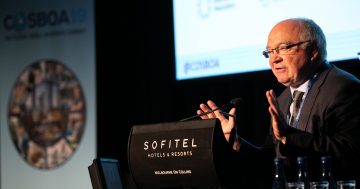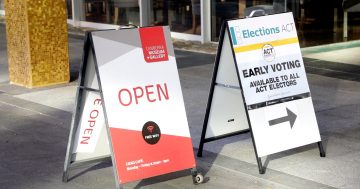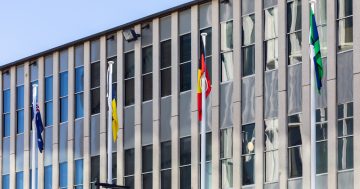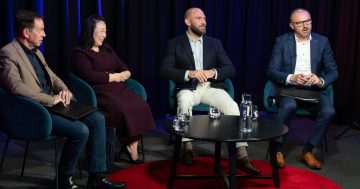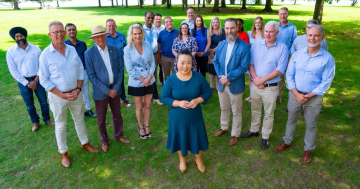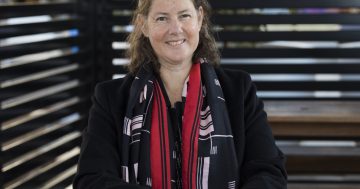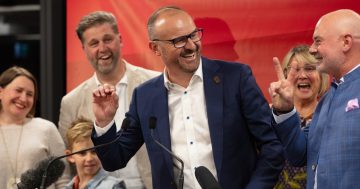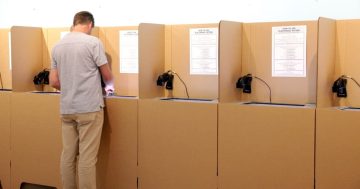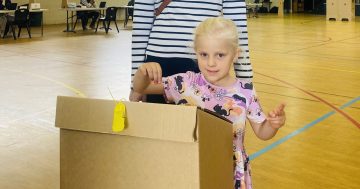
With the ACT election just over a year away, jostling for preselections has started, some more publicly than others.
Most non-party aspirants haven’t actually started thinking about it yet. I would expect that to start in about June or July, just after the ACT budget is brought down.
These aspirants are usually single issue people with a grudge of some sort. They’re there to make up the numbers so I won’t waste my time on them.
As always, we will see fringe groups put themselves forward as “parties” but again, they are really just single issue groups with a grumble. There will be a light rail mob, a motorists (or similar) group, and a citizen’s alliance party of some sort. Democracy at work, but there’s a little bit of noise and then a fade to obscurity.
The Sex Party will have a crack. It will interesting to see if they can emulate Fiona Patten in Victoria. She was was elected to the upper house, which is elected on a proportional representational model but I can’t see the Sex Party getting 16.5% of the vote in any of the ACT’s electorates.
What happens to their preferences will be significant though. Steven Bailey is a good choice so expect him to do better than some would think.
The interesting thing to watch will be the fortunes of sitting members and the rise of non-sitting candidates. The Hare-Clark system can be brutal with non-performing MLAs and throw up surprises with the election of previously unknown people.
Check out what happened to Paul Osborne in Brindabella in 2001. Smashed because he neglected his electorate and was rarely engaged in policy debates other than religious right issues like abortion and euthanasia. Being a sporting hero was not enough when the crunch came.
Hare-Clark can also weed out long term people who have not delivered in the eyes of the electorate, regardless of how hard they have worked. The accident-prone MLA also needs to be careful. The trick is to know when to go before the Hare-Clark axe falls. There is nothing dignified about losing an election. Ask Brendan about the 1996 federal election.
The electorate is a changing dynamic, driven in part by generational change. Governments and oppositions need to go with the generational change reflected in the community itself or risk being out of touch.
We have seen a number of Labor folk putting their names in the public arena as possibles for election. I can’t wait to see if the Liberals have the depth that we have seen popping up of late in Labor.
And I predict a Lazarus-like rising from the Greens. Although we haven’t seen any public utterances yet, I would be surprised if Meredith Hunter and Carolyn Le Couteur don’t nominate.
Amanda Bresnan may have another shot but we haven’t heard much in public from her in a while. I do know she is active within her community and it wouldn’t surprise if she gave it a tilt either.
Many in the community out there don’t know of the actual battleground that candidates do battle within. The system is about as good as it can get in terms of opportunities for non-sitting candidates to get elected but there is still barriers to overcome.
Here’s how it works. And it is the same for all parties so let’s not think this is a Labor thing.
There is an A-team, a B-team, a C-team and a D-team. People slot into these teams according to their energy, opportunity, mentorship and just plain luck.
The A-team is made up of ministers and the opposition leader and deputy, with the Greens MLAs (if there are more than one) making the team for their party (basically cos you can get them all in a shoebox).
The B-team are non-ministerial government MLAs and opposition members.
The C-team is made up of serious non-sitting candidates.
The D-team are those candidates who are there just to make up the numbers, to take the donkey vote and keep the votes in the column. They are either candidates in training or drones.
You will see that the A-team is in a privileged position. They set the campaign direction, they get the poll results (and usually keep them to themselves) and they command the media any time they like. They have the high profile that a success in Hare-Clark demands.
The flip side is that if it is perceived that a minister has performed badly, he or she is in trouble. David Lamont lost his seat as a result of that perception.
Other MLAs have the resources of the Legislative Assembly at their disposal. If they have worked hard as community representatives, they will have a decent profile. Mary Porter is the best example of these.
However, MLAs who have not built a following will be vulnerable. In Brindabella, the Liberals’ Andrew Wall and Nicole Lawder will have this problem. Longevity is a double edged sword and sometimes the community will seek change. Look out Brendan.
The C-team is made up of two types of candidates. The first group are people who missed out last time and have some profile and now experience in campaigning. In this group are both candidates who have the goods and might make it, and those who couldn’t win a chook raffle with $50 worth of tickets. Karl Maftoum in Brindabella and Mark Kulasingham in Murrumbidgee fit the former group.
The second group are quality candidates who need to get a profile. They are usually people with good community credentials and political experience, like Kim Fischer in Ginninderra or Deepak Raj Gupta in Yerrabi.
The D-team will emerge as the internal factional fighting of both parties finds expression. I hope that the genuine D-teamers learn from the experience and that the drones get outed.
Can’t wait to see who will challenge the sitting Liberals or whether the Greens will put up a fresh team or a back to the future mob.
Let the games begin!
(Photo: Posters advertising candidates at for the 2012 ACT election. Credit to Nick D, used under Creative Commons licensing.)












